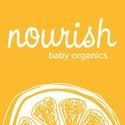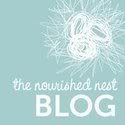No More Toxic Tub Getting Contaminants Out of Children's Bath & Personal Care ProductsMarch 12th, 2009 | ||
Despite marketing claims like “gentle” and “pure,” dozens of top-selling children’s bath products are contaminated with the cancer-causing chemicals formaldehyde and 1,4-dioxane, according to the March 2009 Campaign for Safe Cosmetics report, "No More Toxic Tub." This study is the first to document the widespread presence of both formaldehyde and 1,4-dioxane in bath products for children, including baby shampoos, bubble baths and baby lotions. Many products tested contained both chemicals. What We Found The Campaign for Safe Cosmetics commissioned an independent laboratory to test 48 products for 1,4-dioxane; 28 of those products were also tested for formaldehyde. The lab found that:
Health Concerns  While a single product might not be cause for concern, the reality is that babies may be exposed to several products at bath time, several times a week, in addition to other chemical exposures in the home and environment. Those small exposures add up and may contribute to later-life disease. While a single product might not be cause for concern, the reality is that babies may be exposed to several products at bath time, several times a week, in addition to other chemical exposures in the home and environment. Those small exposures add up and may contribute to later-life disease.Formaldehyde and 1,4-dioxane are known carcinogens; formaldehyde can also trigger skin rashes in some children. Unlike many other countries, the U.S. government does not limit formaldehyde, 1,4-dioxane, or most other hazardous substances in personal care products. Where They Come From The chemicals were not disclosed on product labels because they're contaminants, not ingredients, and therefore are exempt from labeling laws. Formaldehyde contaminates personal care products when common preservatives release formaldehyde over time in the container. Common ingredients likely to contaminate products with formaldehyde include quaternium-15, DMDM hydantoin, imidazolidinyl urea and diazolidinyl urea. 1,4-dioxane is a byproduct of a chemical processing technique called ethoxylation, in which cosmetic ingredients are processed with ethylene oxide. Manufacturers can easily remove the toxic byproduct, but are not required by law to do so. Common ingredients likely to be contaminated with 1,4-dioxane include PEG-100 stearate, sodium laureth sulfate, polyethylene and ceteareth-20. What You Can Do Contrary to industry statements, there are no regulatory standards that limit formaldehyde, 1,4-dioxane or most other toxic chemicals in personal care products sold in the United States. There are signs the U.S. is gearing to catch up, but for now it's up to consumers to consider carefully before they buy. Here's some suggestions for safeguarding your family's health:
Status Update Led by the Campaign for Safe Cosmetics, 44 organizations representing 1.7 million moms, nurses, doctors and other people concerned about our environment and our health signed on to a May letter to J&J, in which we asked the company to make safe products and meet with us. Read the letter and list of signers. On April 29, 2009, Sen. Kirsten Gillibrand (D-N.Y.) introduced the Safe Baby Products Act, which directs the Food and Drug Administration to investigate and regulate hazardous contaminants in personal care products marketed to or used by children. She introduced the bill in response to the "Toxic Tub" report. Though the U.S. FDA has yet to respond to our test results, retailers and governments in Asia have taken action. Immediately following our report release, a major supermarket in China pulled Johnson & Johnson products from the shelves amid concerns that the products are contaminated with carcinogens. Both the Vietnamese Drug Administration and the Chinese government responded by testing products immediately. Though China later declared J&J products safe, it tested products made in China, not those for the U.S. market. Manufacturers can use different ingredients for different markets, which may be the case here. Because we don't have the full report from China, we have no way of knowing which products the Chinese government tested or what they found. Here in the United States, our tests found two carcinogenic contaminants in Johnson's Baby Shampoo. Other companies are making products without 1,4-dioxane or formaldehyde, and we ask that J&J remove these unnecessary toxins, too. More Information Download the report, "No More Toxic Tub" Complete list of products tested, with results Case Study: Pure and gentle? Children's products can be deceptive Testing methodology Press release: Children’s Bath Products Contaminated with Formaldehyde, 1,4-Dioxane (Mar. 12, 2009) News coverage Science: 1,4-dioxane Science: Formaldehyde and formaldehyde-releasing preservatives Science: Low-dose exposures What's In Your Products? Contaminants in kids' bath products |
The Campaign for Safe Cosmetics
Nourish Baby Organics is proud to add our name to the list of skin care companies committed to keeping our products safe and chemical free! By signing the compact for safe cosmetics we pledge that our skin care line meets and exceeds the standard set by the European Union Cosmetic Directive to be free of chemicals strongly suspected to cause birth defects and cancer. It is an honor to be apart of The Campaign for Safe Cosmetics. They are a wealth of important information on how to keep you and your family safe from chemical exposure. Here is a great article they published on keeping bath time safe for your little ones....
Subscribe to:
Post Comments (Atom)


















No comments:
Post a Comment